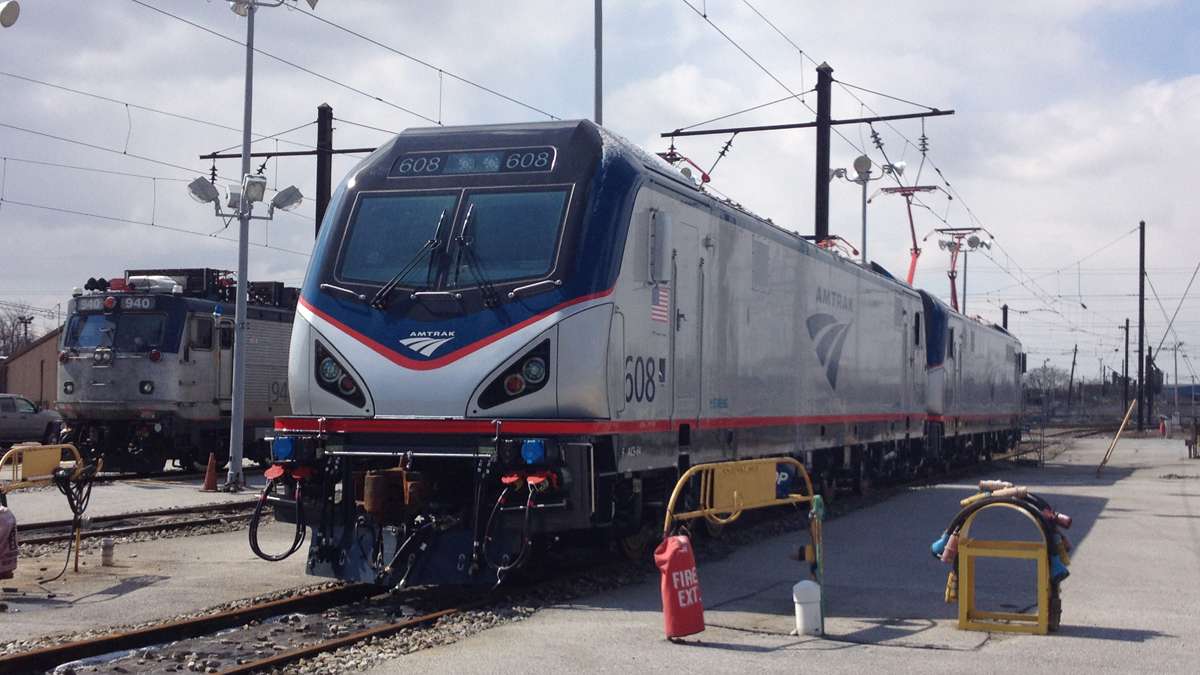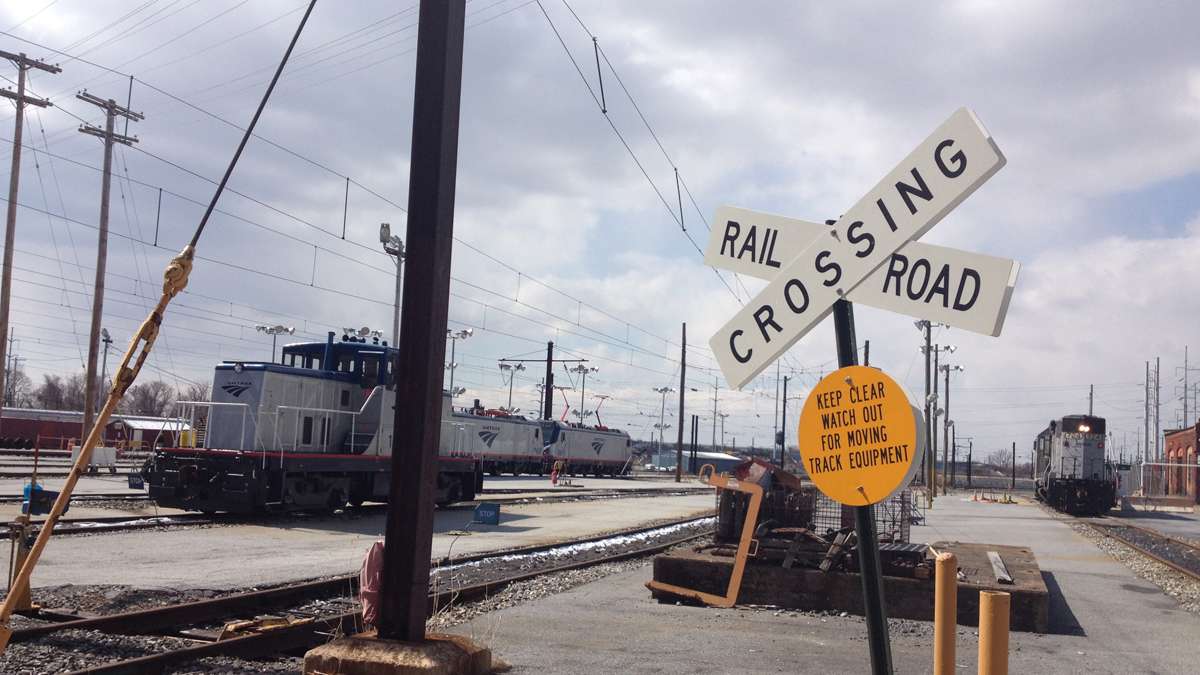Inside Amtrak’s new fleet of high-tech train engines
ListenSophie Reid climbs aboard one of Amtrak’s new ACS-64 City Sprinters to uncover the science behind the new fleet of locomotives.
Amtrak has unveiled five gleaming new ACS-64 City Sprinter engines. The sixth of these impressive electric engines goes into service this week and the fleet will replace Amtrak’s current 35-year-old engines, which have clocked up three to four million miles each.
The Siemens-made locomotives have been brought in to replace Amtrak’s entire fleet of existing engines on the Northeast Regional Corridor… so from Washington D.C. to Boston via Wilmington, Philadelphia and New York. They will also operate on the Keystone Service between New York, Philadelphia and Harrisburg.
Greg Gagarin is an Amtrak engineer and one of the executives overseeing the ACS-64 project. He took me on board at Amtrak’s Wilmington Maintenance Facility for a rare glimpse.
The first of 70 brand new City Sprinters hit the tracks back in February. They are part of the biggest purchase of electric trains since World War II.
Gagarin explains what is special, scientifically, about these whiz-bang locomotives.
“The engine has a feature known as regenerative braking. That takes the forward momentum of the train, converts it back into electricity and reintroduces it back into the power grid.”
Back inside Amtrak’s Wilmington offices, Greg Gagarin told me that innovations like the energy-saving brakes will make their trains greener and save money – around $300 billion over the next 20 years.
He gave us a science lesson on how the brakes create energy.
“You can, with a very simple switch now run by a computer, turn those motors into generators… alternators, specifically. And the alternators will generate the exact same electrical power that they were consuming.”
That power is then sent back through the engine’s propulsion machinery into a device called the pantograph, which collects the power. And that will allow for big energy savings, says Gagarin.
“Well the estimate of three billion kilowatt hours is probably an order of magnitude, in terms of the energy savings anticipated.”
That is enough to power over a quarter of a million American homes or an awful lot of lightbulbs.
Amtrak is not the only one using this clever technology. Philadelphia’s mass transit system, SEPTA, adopted regenerative braking on its trains in 2012. SEPTA captures the energy generated by its trains’ brakes at 30 substations. It is then stored and put back into the grid. Just one substation in Kensington, Philadelphia is thought to be saving SEPTA around $60,000 a year in electricity bills and creating $200,000 in revenue.
Back at Siemens, they also threw in some new safety features.
Gagarin says the Amtrak City Sprinter’s crash technology is like that of a race car.
“The race cars are intended to fall apart in a very specific way, and [that] the shell that surrounds the driver is almost always intact at the end of one of these very dramatic collisions that you often see in racing.”
Green improvements and more safety sound fantastic. But you are probably wondering whether the new engines will go any faster than the current ones. Could they rush you from New York City to Philadelphia in, say, 45 minutes? The answer to that is “no”. The City Sprinter’s top speeds of 125 miles per hour are no quicker than Amtrak’s existing fleet can muster.
In comparison, Germany’s ICE trains travel at over 170 miles per hour, and French TGV locomotives top 200 miles per hour. Britain is building a high-speed rail network that will allow speeds of 250 miles per hour. But Gagarin says America has a different approach.
“Because of some of the accidents that have historically occurred on railroads in North America, there was a focus as well on the survivability of the trains. And, of course, that does make them bulkier and heavier.”
And what about Amtrak’s old outgoing engines? They will gradually be replaced, with plans for the last to be retired next year. Eventually, they will be sold off to another railroad or scrapped.
WHYY is your source for fact-based, in-depth journalism and information. As a nonprofit organization, we rely on financial support from readers like you. Please give today.







